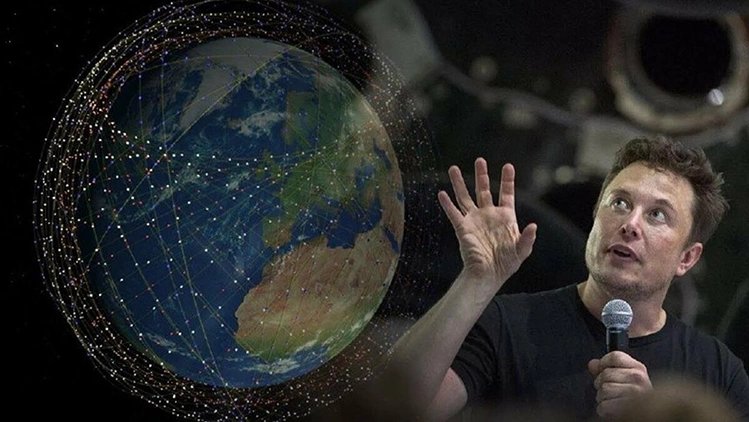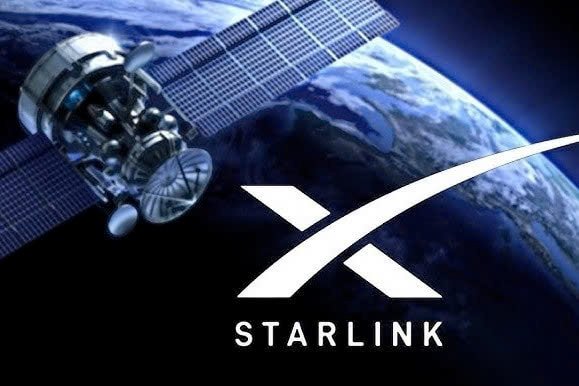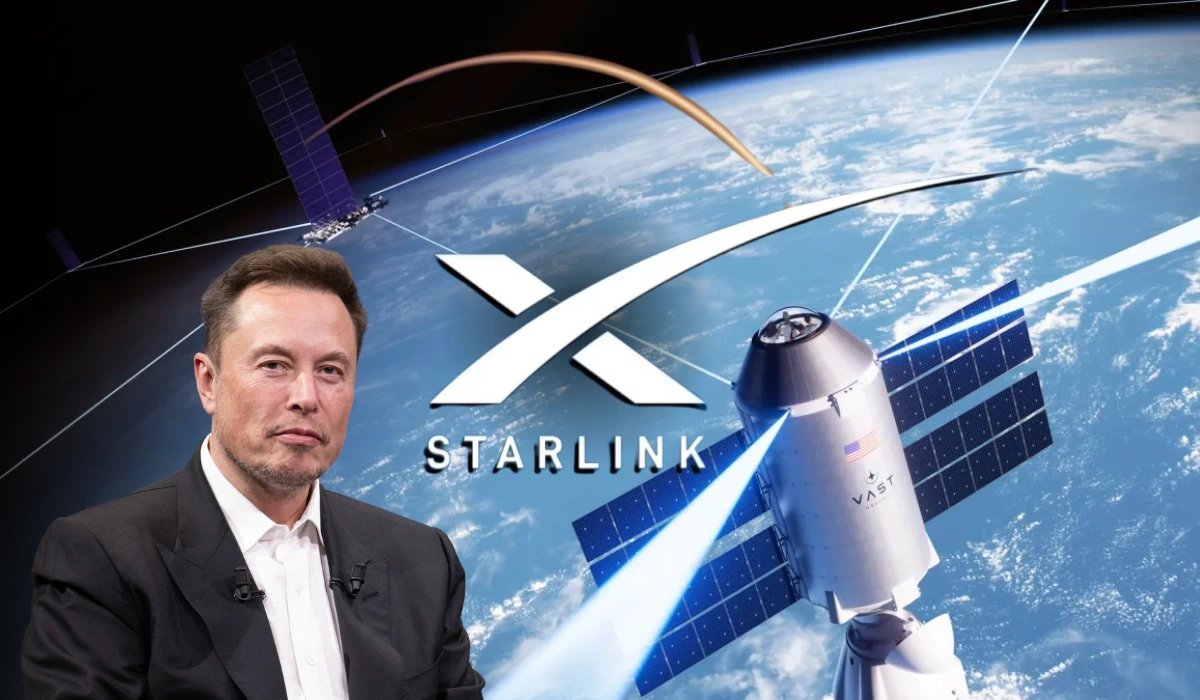In recent years, Elon Musk’s innovative ventures have reshaped industries across the globe. One such endeavor that has captured the attention of both the tech world and the general public is his satellite internet service, Starlink. Developed under SpaceX, Musk’s satellite internet service aims to provide high-speed internet access to areas that are traditionally underserved or completely out of reach for other providers. The introduction of Starlink into the global communication landscape is revolutionizing connectivity in ways previously thought impossible. But how exactly is Musk’s satellite internet being used, and what impact is it having?
1. **Bringing Internet to Remote Areas:**

One of the most significant ways Musk’s satellite internet is being used is to bring connectivity to remote, rural, and underserved areas. Millions of people living in areas with limited or no access to traditional broadband can now access high-speed internet via Starlink. The satellite network enables internet services where laying physical cables or infrastructure would be cost-prohibitive or logistically impossible.
In countries with vast rural expanses, such as in parts of the United States, Canada, and Australia, Starlink is providing internet access to people who otherwise might have been disconnected from the digital world. The service can be a game-changer for educational opportunities, business development, and personal communication, especially in isolated regions.
1. **Enhancing Connectivity in Disaster Stricken Areas:**
Natural disasters such as earthquakes, hurricanes, and floods often disrupt traditional communication lines and infrastructure. During such times, satellite internet, particularly Starlink, plays a vital role in re-establishing connectivity for rescue operations and affected communities.
Musk’s satellite internet system has been used in disaster-stricken areas to provide emergency communication services. For instance, Starlink has been deployed in Ukraine during the ongoing conflict, allowing civilians and military units to maintain vital communication links and access the internet during times of crisis. Its rapid deployment in emergency scenarios illustrates the flexibility and power of satellite internet in supporting recovery and relief efforts.
1. **Supporting Global Businesses and Remote Work:**

In today’s globalized economy, many businesses rely on fast and stable internet connections for seamless operations. Starlink’s satellite internet is transforming the way businesses operate by providing reliable connectivity in areas that were once cut off from global networks.
One key area where Starlink has been used is in the remote work and digital nomad sectors. With an increasing number of people working remotely, businesses have found Starlink to be an ideal solution for ensuring their teams stay connected, even if they’re working from isolated locations. This is particularly valuable for industries that require constant online communication and cloud-based tools, such as software development, marketing, and digital consulting.
1. **Empowering Educational Opportunities:**
Education has become increasingly digital, especially during the COVID-19 pandemic. However, students in remote areas or developing countries often struggle to access online learning resources due to the lack of reliable internet. Starlink is bridging this gap by providing high-speed internet in areas where traditional service providers can’t reach.
In places like rural Africa, parts of South America, and even remote regions in the U.S., Starlink is enabling students to attend online classes, access educational content, and complete assignments with ease. The ability to access high-quality internet from anywhere is helping level the playing field, making it possible for students in underdeveloped regions to compete academically with their peers in urban centers.
1. **Revolutionizing Maritime and Aviation Industries:**

Starlink is not just changing land-based connectivity; it is also making waves in the maritime and aviation sectors. For passengers and crew members, reliable internet access while on the move—whether on a ship at sea or in an airplane flying at 30,000 feet—has long been a luxury, often with slow speeds and poor connection reliability. Musk’s satellite network is changing that by providing high-speed internet access in these environments.
Ships, in particular, benefit from Starlink’s low-latency satellite service, which allows for smoother communication between vessels, ports, and command centers. Similarly, airlines are now testing Starlink’s connectivity options to enhance passenger experiences with consistent, high-speed internet throughout their flights.
1. **Facilitating Internet of Things (IoT) and Smart Infrastructure:**
Musk’s satellite internet is also being leveraged to support the growth of the Internet of Things (IoT) and smart infrastructure systems. IoT devices, such as sensors, cameras, and smart meters, often require a constant and stable internet connection to operate effectively. Starlink’s ability to provide high-speed internet connectivity in remote or rural locations makes it an ideal solution for the IoT market.
In remote agricultural areas, for example, IoT devices can be used to monitor crops, track livestock, and optimize farming operations. The addition of Starlink’s connectivity can enable farmers to make data-driven decisions without worrying about internet connectivity issues. Similarly, smart city projects in remote or developing regions can use Starlink to provide reliable internet connections for everything from traffic monitoring to public safety systems.
1. **Expanding Global Internet Access:**

Beyond specific use cases, the overall mission of Musk’s Starlink project is to provide global internet coverage, eliminating the digital divide between urban and rural areas. As more satellites are launched into orbit, Starlink’s network is expected to grow, offering more reliable and widespread access to high-speed internet.
This expansive reach holds great potential for global internet access. In regions where broadband infrastructure is underdeveloped or where traditional providers face significant challenges, Starlink could provide a much-needed alternative, improving access to the global information economy and digital services for millions of people.
1. **Future Innovations and Potential Use Cases:**
Looking ahead, Musk’s satellite internet service is expected to evolve further with new technological advancements. One exciting area of development is the integration of Starlink with 5G networks. With 5G becoming the standard for mobile connectivity, integrating Starlink with 5G could further enhance the speed and reliability of internet services, especially in hard-to-reach areas.
Moreover, as the number of satellites in orbit continues to increase, the quality and speed of the internet provided by Starlink are expected to improve, offering better latency and bandwidth for users. As Starlink becomes more integrated into various industries, new applications and use cases will likely emerge, such as in telemedicine, autonomous vehicles, and advanced agricultural technologies.
**Conclusion:**
Elon Musk’s Starlink satellite internet is more than just a technological marvel; it’s a game-changer for people and industries around the world. From bringing connectivity to remote areas to supporting global businesses, emergency response efforts, and education, Starlink is transforming the way the world stays connected. As the system continues to expand and improve, the potential for satellite internet to empower people in even the most remote corners of the globe is limitless. Musk’s vision of a connected world is steadily becoming a reality, one satellite at a time.
